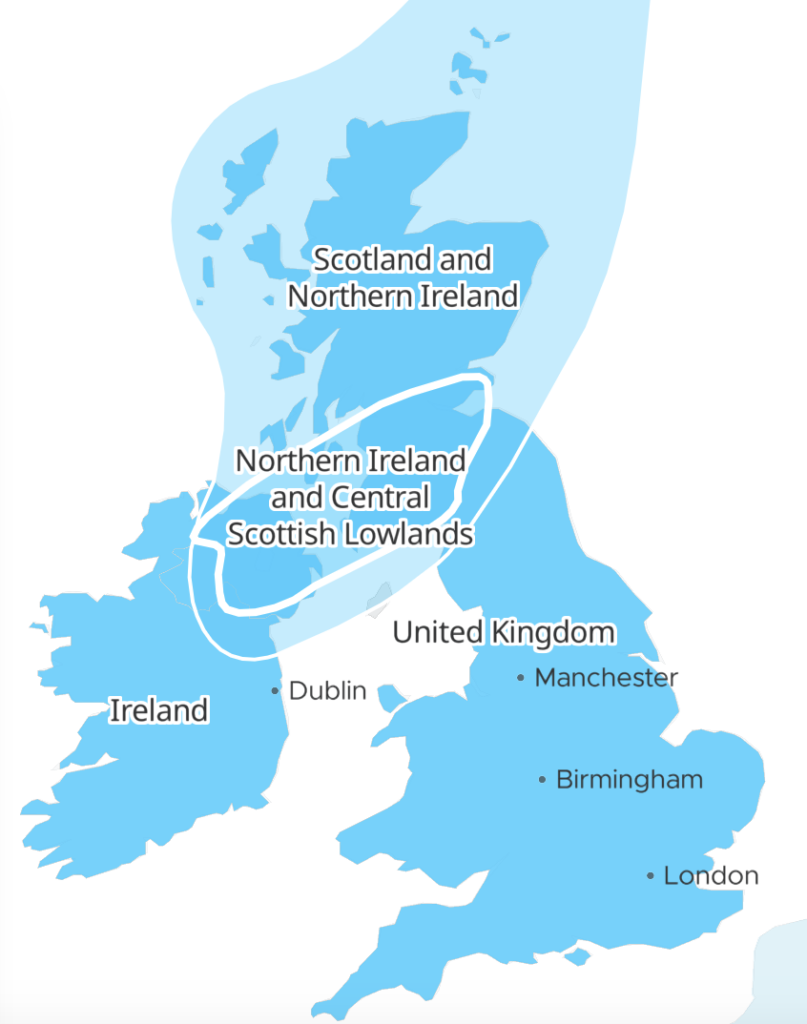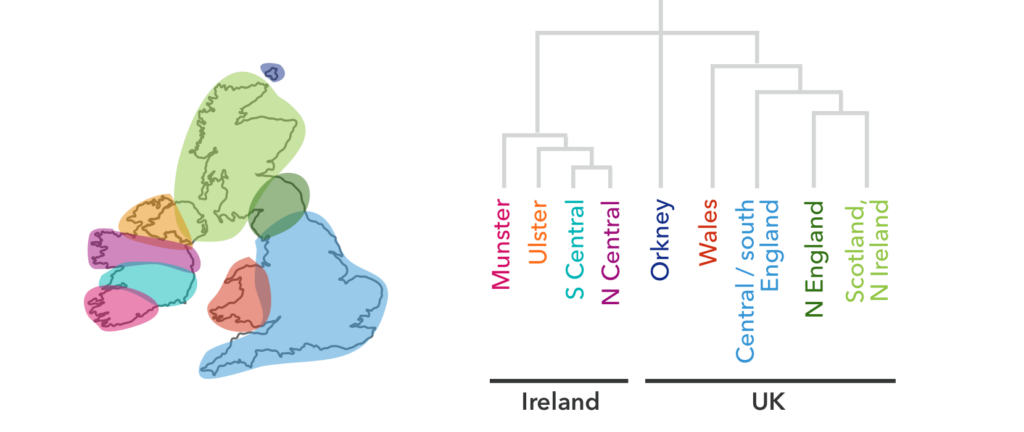As part of a series of ancestry updates, 23andMe has added finer detail for customers with British & Irish ancestry.
More than half of our customers on the latest genotyping chip, v5, will likely match one or more of the 38 Genetic Groups we added for customers with ancestry in Ireland and Great Britain (often referred to, together, as the British Isles). These include one Genetic Group in Wales, 17 in England, eight in Scotland, and 12 in Ireland.

Ireland and Great Britain
The history and genetic landscape of the British Isles — which include Great Britain, Ireland, the Isle of Man, the Hebrides, and the Northern Isles — were largely shaped by waves of Celtic, then Anglo-Saxon, and Viking migrations from northwestern Europe. More recently, the people of the Isles have left their genetic fingerprints around the world, following centuries of nautical exploration, colonization, and immigration.
And although the Republic of Ireland is now independent of the United Kingdom—and Scotland and Wales have distinct cultural identities of their own—the people of the British Isles share this common genetic history and cross-cultural mixing.
Ancestry Composition Update
This update helps people with roots in this region discern more detail in their connections. The update also reflects that 23andMe’s Ancestry Composition report is a living analysis. Therefore, it improves over time as we add new reference data.
Underlying our Ancestry reports are powerful algorithms and analytical tools developed by 23andMe population geneticists and engineers to offer our customers more insights into their ancestral origins. Using these tools allows 23andMe to create and continuously improve our customers’ results. Some recent updates include adding finer detail for customers with African ancestry, Chinese ancestry, Indigenous American ancestry, Latine ancestry, Ashkenazi ancestry, and Spanish & Portuguese ancestry.
For many customers with ancestry from the British Isles, this new update will improve the specificity of their results and connect them to Genetic Groups within the region. However, not all v5 customers with British and Irish ancestry will receive new Genetic Group matches with this update. We identify these Genetic Groups by using identity-by-descent, which relies on heavy-duty computing to find clusters of individuals with shared segments of DNA. Those clusters also align with specific geographic regions.
While these Genetic Groups may sometimes overlap and do not necessarily reflect political boundaries, they often are more reflective of the distinct regional populations that connect to a customer’s ancestry.

Regions in the British Isles
In this update, the new methodology and algorithms use data from groups with four grandparents from specific parts of Ireland and Great Britain. Using these regional populations as reference data, we can connect customers with ancestry to those regional genetic groups through their shared DNA.
While people from Ireland, Britain, or Scotland tend to be genetically similar, genetic clusters show that even within countries, there are distinct regional differences, and this update captures some of that.
The most common Genetic Groups in the British Isles include Scots Irish, South England, Northeast England, Southwest England, East Anglia, Scottish Lowlands, and Wales.
The Scottish Highlands, the Northern Isles, Southwest Munster, and Galway are the least common.

More on Matching
Matching to one of these Genetic Groups means that you share a high genetic similarity with reference individuals in that group. While some regions overlap, we’ve distinguished each geographically and descriptively.
While customers may receive a likely or highly likely match to one of these Genetic Groups, this update does not provide more breakdowns for customers’ British & Irish ancestry percentages.
Your ancestry matters for your health
Many people find value in learning about their cultural roots. But knowing your ancestry can help you better understand your health. Your health and likelihood of developing certain conditions involve your environment, family history, and lifestyle. But your genetics also plays an important role, and some genetic risks are more common among people with specific ancestry.

So, for example, people with ancestry from the British Isles are more likely to carry a variant in the HFE gene associated with hereditary hemochromatosis. Hereditary hemochromatosis, known as the “Celtic Curse,” is a condition characterized by an over-absorption of iron which in turn can cause damage to the joints and specific organs.
Find out more
If you are a 23andMe customer with the latest genotyping chip, V5, you can see your results in your Ancestry Composition report.
Not yet a customer? Find out more about 23andMe’s ancestry service and other services offered to customers here.




